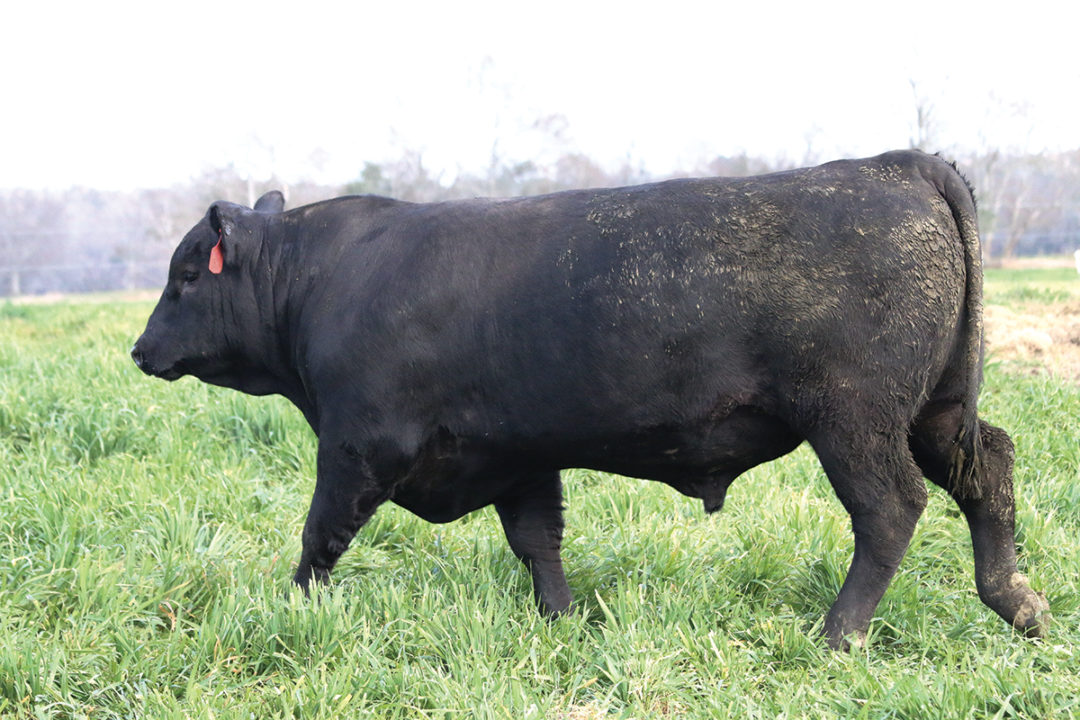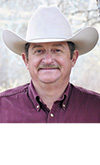Fall calving continues to increase in the U.S. Approximately 30% of the herds in the U.S. are calving in the fall. Depending on where you are in the country, calving could start in late August, mid-October or anywhere in between. That means bulls will need to be turned out with the cows 60 to 80 days after the start of calving season (late fall to early winter). Bulls in fall-calving herds may need slightly different management than bulls for spring calvers.
Body condition and nutrition
Bulls should be body condition scored (BCS; 1dis = emaciated to 9 = obese) in August, regardless of when the breeding season starts. This timing allows for managers to alter body condition if needed. Examination of bulls by a Canadian veterinary clinic demonstrated that optimum BCS for bulls is 4 to 6 (Figure 1).
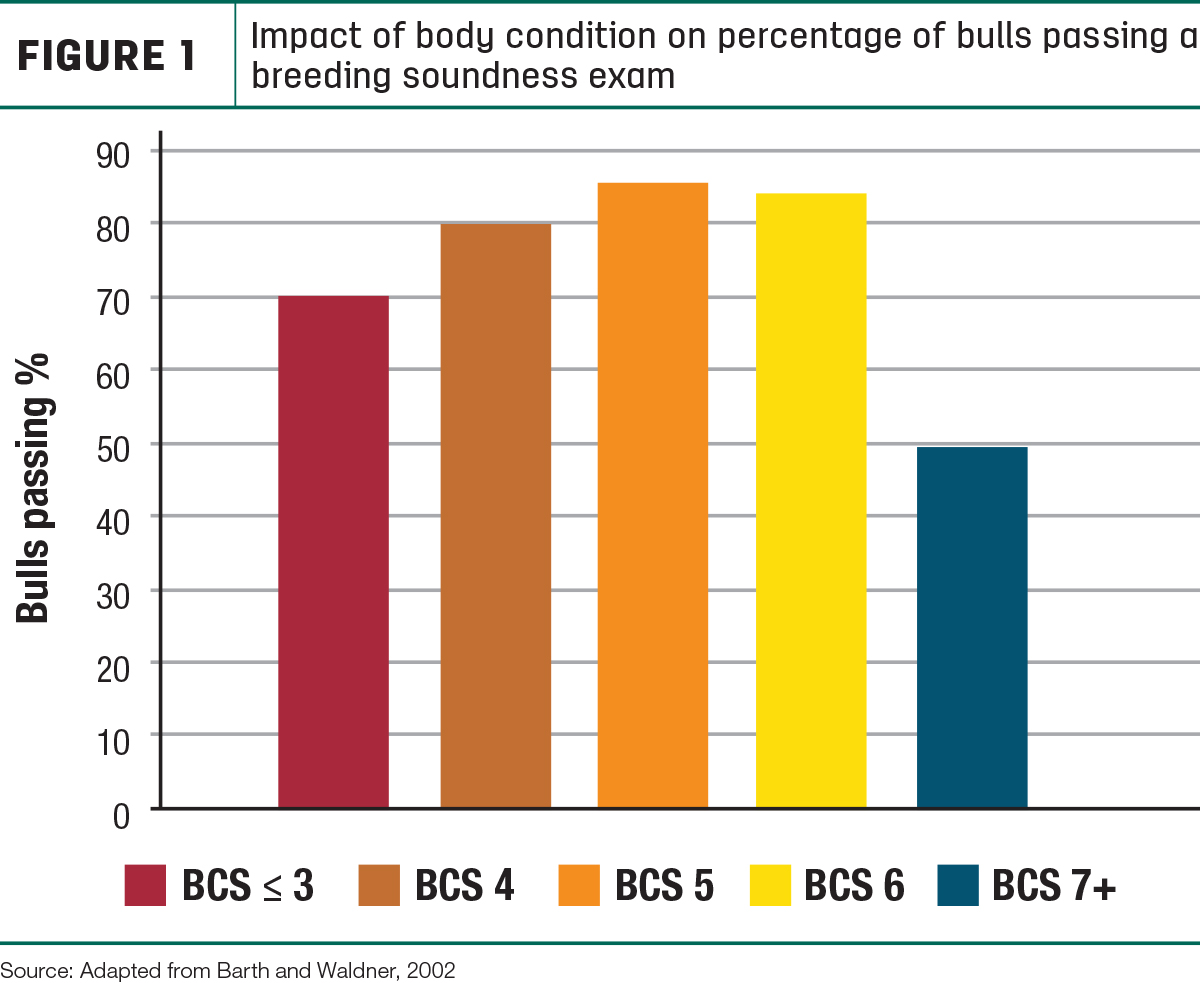
Bulls can suffer from being too thin or too fat. Fat bulls (BCS 7 or greater) have reduced fertility due to impaired sperm production.
Bulls for fall calving usually are carrying more condition than needed due to good summer forage. These bulls need to lose weight, primarily through exercise.
In contrast, due to drought this year, some bulls may need additional nutrition. Also, bulls that are used in both spring- and fall-calving herds will usually need to recover body condition before the fall breeding season. It takes about 100 pounds of gain to increase each BCS. Depending on the diet fed to bulls, it may take 30 to 60 days to gain a BCS.
Young bulls (15 to 20 months) need to continue to gain 1.5 pounds per day to maintain normal growth. Nutrient requirements in bull diets are illustrated in Table 1.

In temperate areas of the U.S., good fall pasture can increase weight in older bulls or keep young bulls growing. Taking a pasture sample for nutrient analysis can help you decide if supplementation is needed. Stored forages, total mixed rations (TMRs) or supplementation of crop residues may be needed in colder climates. Plan for pasture shortages or cold weather. Your extension professional or consulting nutritionist can assist you with developing a supplementation program.
Exercise
Putting bulls in large pastures with water and mineral at different ends of the pasture can encourage them to travel more. Research indicates bulls that exercise daily have higher libido and improved seminal characteristics including a 17% increase in semen volume. Exercise will also prepare bulls to cover ground to find cows in estrus without tiring. Forcing bulls to walk daily may reveal individuals that have previously unnoticed soundness issues.
Breeding soundness exams
Bull breeding soundness exams eliminate bulls that have a high probability of failing to successfully impregnate cows. Bulls need a breeding soundness exam every year approximately 30 days before the breeding season. A variety of factors including nutrition, injury, exposure to extreme heat or cold and infections can reduce bull fertility. In addition, many states require bulls to be tested for trichomoniasis annually. States usually have a deadline for annual trich testing. Be sure to know your state’s rules. Combining a breeding soundness exam with disease testing is a good use of time and a veterinary call.
Breeding soundness exams for bulls involve a physical evaluation, examination of reproductive organs and semen evaluation. The physical exam includes analyzing vision, feet and leg structure and mobility. Bulls initially use sight to locate cows in heat by observing cow to cow mounting behavior. Then they travel to cows and confirm readiness to breed by smell and attempted mounting.
Examination of the reproductive system includes palpation of internal organs, inspection of the penis, measuring scrotal circumference and semen evaluation. Semen is evaluated for concentration, motility and presence of abnormal sperm. To pass, semen must have greater than 30% progressive motility and at least 70% normal sperm. More details on bull breeding soundness exams can be found online at Bull breeding soundness examinations.
Heat stress and cold stress
Bull fertility can be greatly diminished by heat stress. Some damage due to heat stress, such as abnormal sperm morphology, can be determined during a breeding soundness exam. However, other impairments (DNA damage, impaired acrosome membrane) may not be detected by standard exams. Heat stress is one of the reasons fewer bulls tested in July and August pass breeding soundness exams (Figure 2 ).
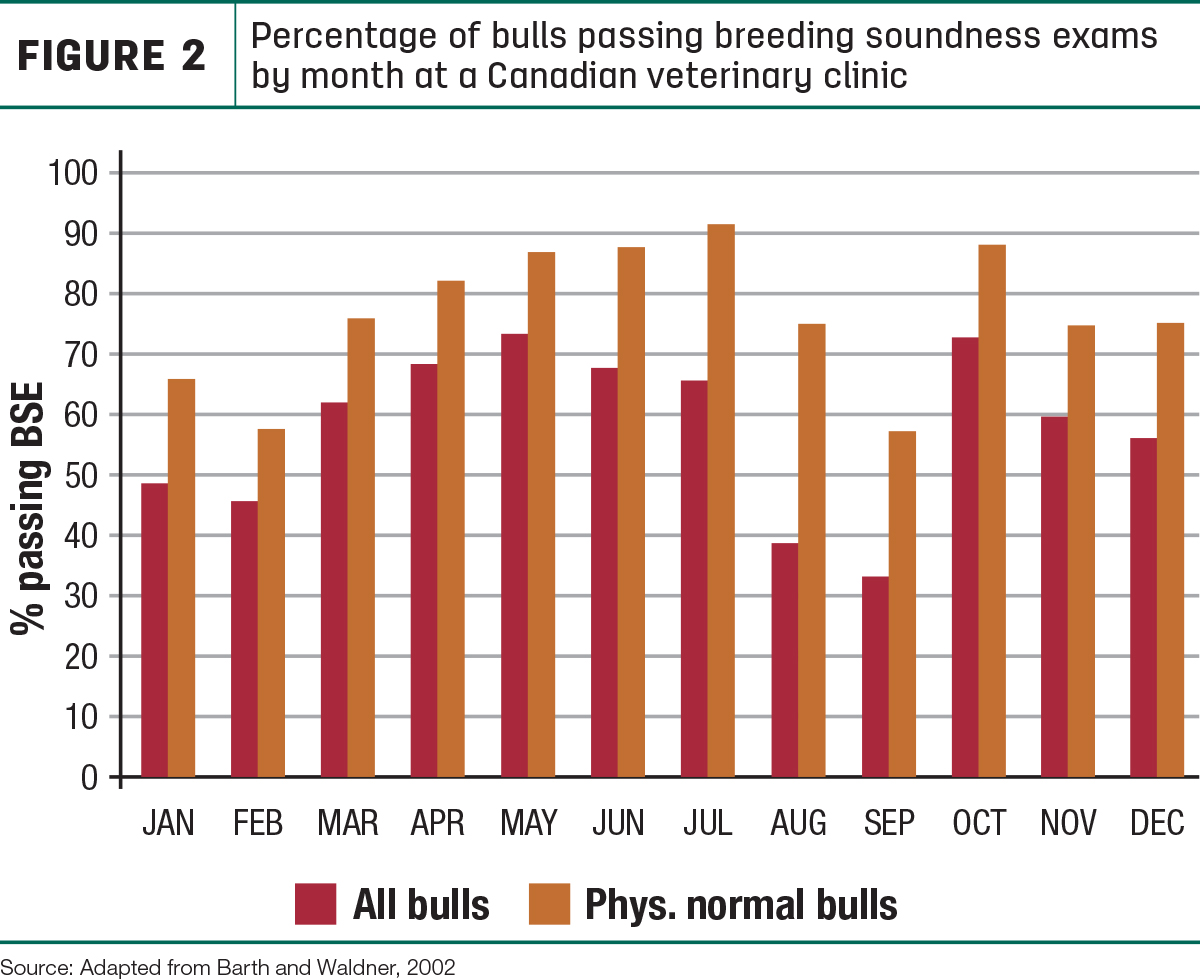
Bull fertility is diminished for several weeks after heat stress; therefore, it may take up to two months for bulls to recover from heat stress.
Heat stress in cattle occurs when the temperature-humidity index (THI) exceeds 75 (see Figure 3).
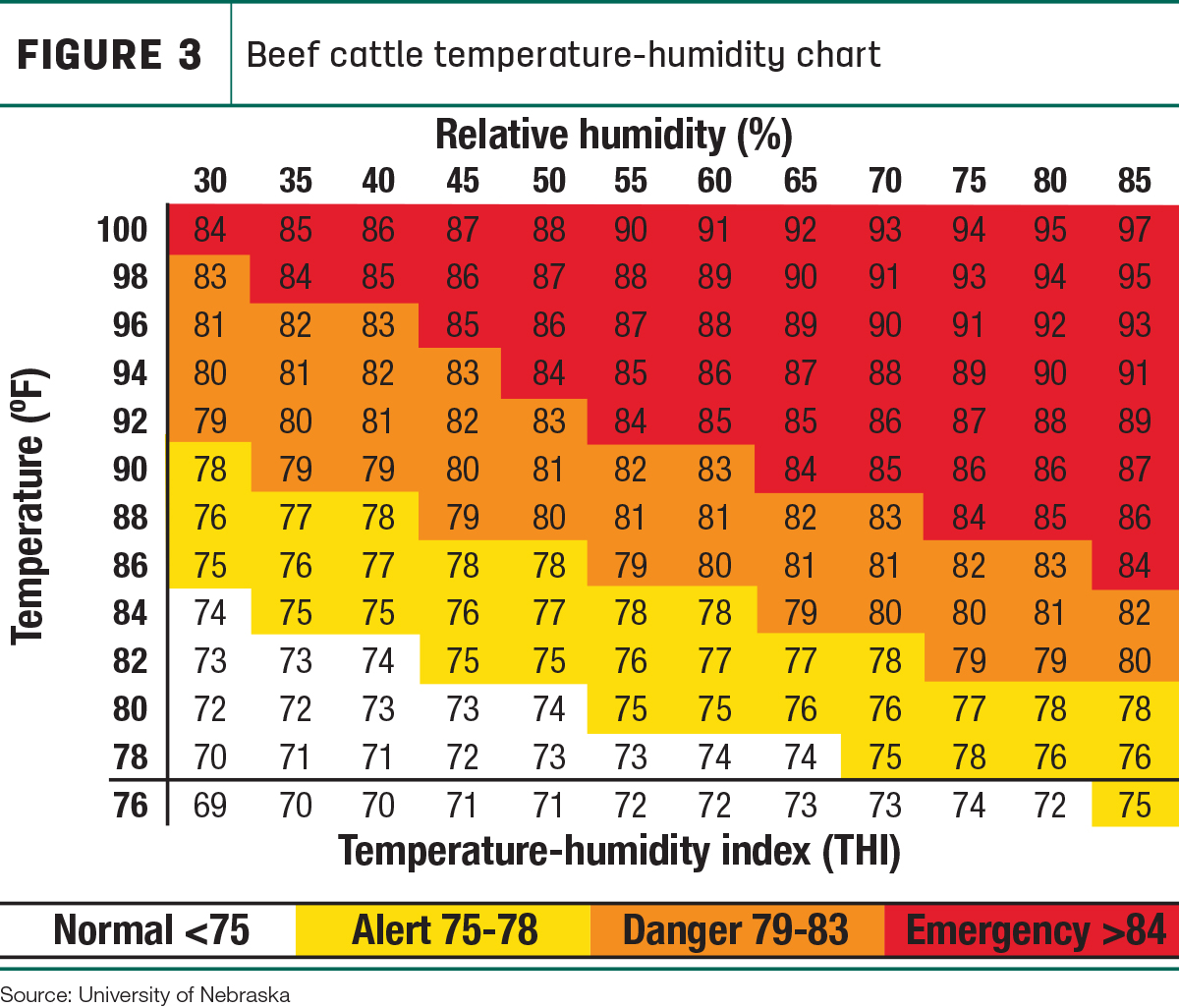
The extent of damage from heat stress may be affected by wind speed and night cooling. Providing shade or water misting can reduce heat stress. While bulls used to breed fall-calving cows may not be experiencing heat stress during the breeding season, ranchers should be aware of the carry-over effects of heat stress on bull fertility. For this reason, it is important to wait until close to the breeding season to conduct breeding soundness exams.
In Northern operations, bulls servicing fall-calving cows may be breeding during extremely cold weather. Ideally, all animals should have access to a windbreak and some bedding. January and February temperatures can result in scrotal frostbite, resulting in damage to testes and reduced fertility.
Vaccinations
Generally, bulls should be on the same vaccination program as the cow herd. Consult your veterinarian on a vaccination program for bulls. Usually, bulls will be vaccinated at the time of the breeding soundness exam. It is best to wait until bulls pass the exam before vaccinating. Remember, vaccines may have a drug withdrawal time that must be followed before infertile bulls can be marketed.
Recently, considerable research and discussion has focused on the impact of vaccinating cows with modified-live vaccine (MLV) close to the breeding season. Unfortunately, similar information for bulls is limited. This would be another good point to discuss with your veterinarian.
Spending time and effort preparing bulls for the breeding season will pay off with more calves born early in the calving season. Hopefully, fall will be temperate with plenty of forage.



